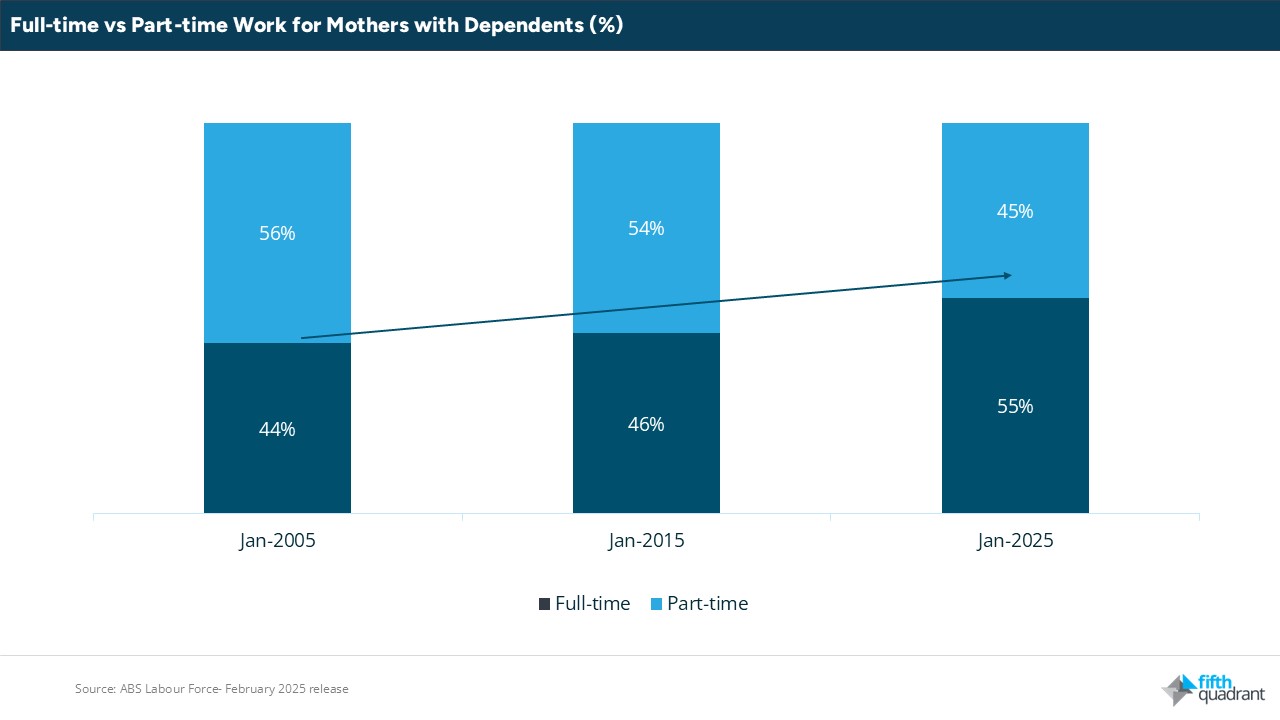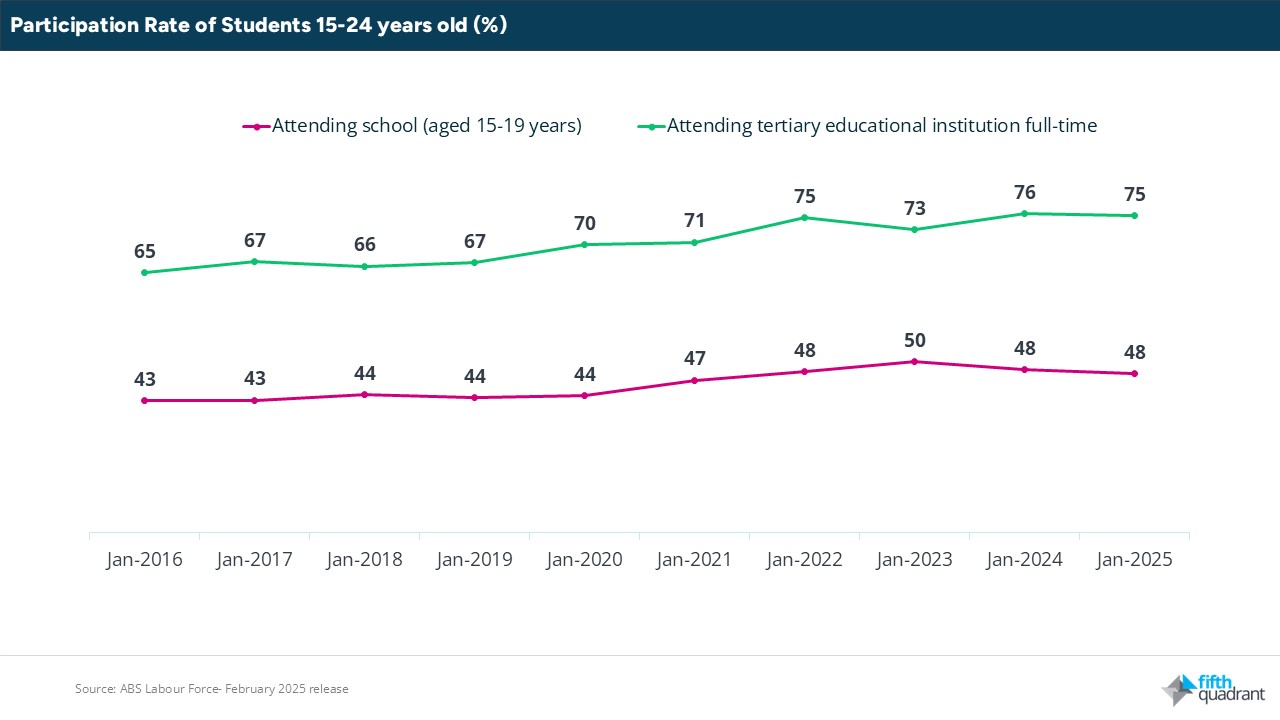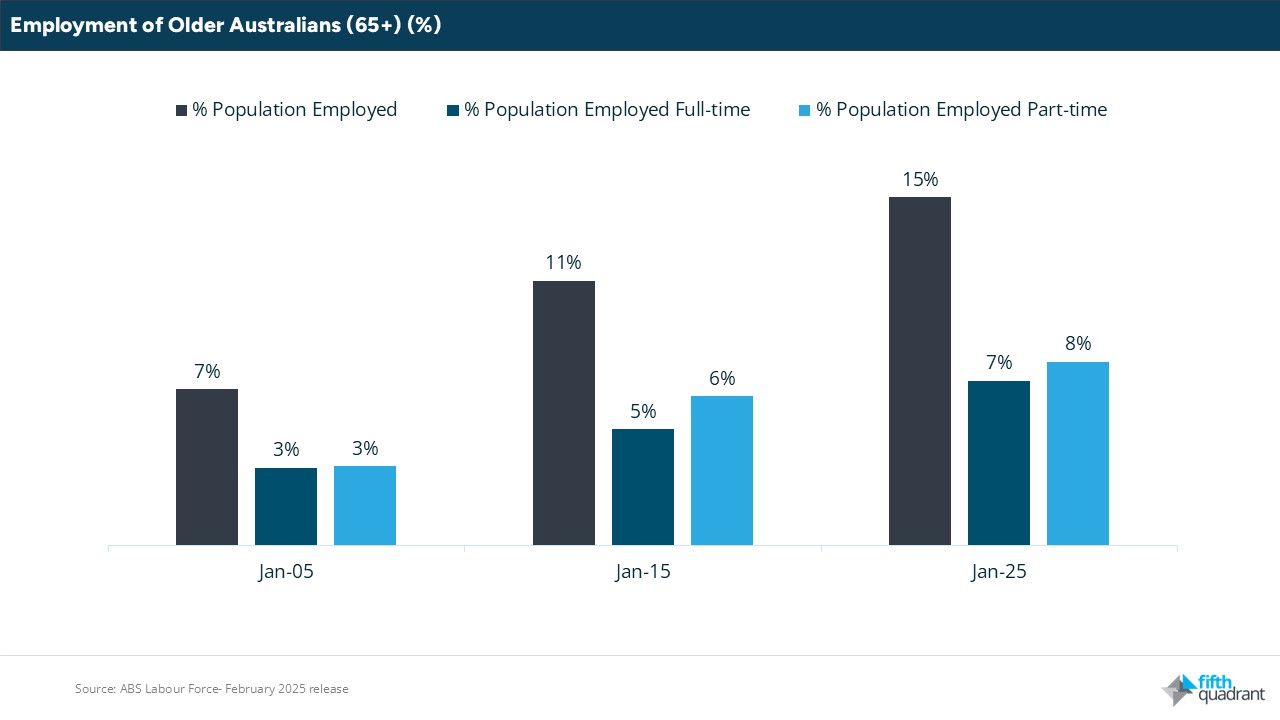Author: Jessica Phan | Posted On: 10 Apr 2025
Employment trends are showing us that the Australia’s labour market is changing. This can be inferred from record low levels of unemployment and a participation rate that has steadily grown from 64% in February 2015 to 67% in 2025. However, the deeper transformation is happening beneath the surface. Demographic shifts, evolving work patterns, and rising economic pressures are reshaping not just who is working, but also how they work.
Digging into the latest labour force data from the Australian Bureau of Statistics (ABS), we have identified three trends that capture this evolving landscape, helping us understand what it means for Australia’s future.
1. women narrowing the gap
Employment trends show us that male participation has held steady at 71% over the past decade, but female participation is up from 58% to 63%, with women now making up 40% of full-time workers (up from 34% in 2005).
Long-term reforms in childcare access and affordability have also given mothers greater flexibility to pursue work. As a result, maternal workforce participation has climbed to 78% in 2025, up from 67% in 2015. Not only are more mothers working, but their work patterns are shifting; in 2005, just 44% of working mothers were employed full-time; by 2025, that share has risen to 55%.
However, it’s not just policy driving this transformation; rising cost-of-living pressures are also forcing more women into the workforce, making employment a necessity as much as a choice.

2. students working more, and sooner
In the same vein, the employment trends show that many young Australians are entering the workforce earlier, juggling work and study out of financial necessity. This is highlighted in the Fifth Quadrant Consumer Sentiment Tracker, where 44% of 18–24-year-olds list affordability of essential products as their top concern over the next 12 months.
Labour force participation among full-time tertiary students has risen to 75% in January 2025 (vs. 61% in 2019). Meanwhile nearly half (48%) of full-time high school students aged 15–19, are now actively seeking or working, compared to 43% in 2016. Students today are not just preparing for the workforce; they’re already in it, navigating multiple responsibilities under growing pressure.
At the same time, more men – particularly those aged 15-29 – are taking on part-time roles (up from 18% in 2005 to 26% in 2025), suggesting a more flexible transition into full-time work.

3. older Australians staying in the workforce
We also need to remember that it isn’t only young people being impacted by these trends. Australians aged 65 and over are increasingly delaying retirement, with 15% of this age group employed in January 2025, more than double the rate in 2005 (7%).
This trend is part of a global shift driven by longevity, recognition of the social benefits of employment, and evolving attitudes toward retirement. But in Australia, financial stress is also a key driver; our Consumer Sentiment Tracker also showed 65% of Australians aged 65 and over, are worried about affording essential products (vs. 55% of Total Population).

what does this mean for the future of work
Together, these shifts reflect a labour force that is more diverse, dynamic, and economically pressured than before. For businesses and policymakers, supporting a workforce that varies significantly in term of age, needs, and expectations, is key. For individuals, it means navigating careers in a society where work is more fluid, less linear, and constantly evolving.
Fifth Quadrant runs a regular Consumer Sentiment Tracker, offering organisations access to fast and cost-effective insights that can help them understand the changing needs of consumers in this environment. Join our omnibus and explore sentiment, brand health, preferences or experiences, uncovering insights that can inform your brand, marketing and customer engagement strategies.
For any questions or inquiries, feel free to contact us here.
Posted in Social & Government

